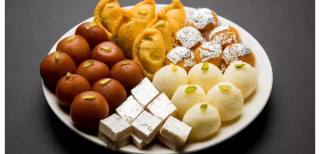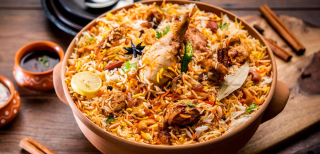How Indian Thali Reflects Culture, Balance & Nutrition
The Indian thali is more than a meal it's a cultural map, a nutritional guide, and a celebration of tradition served on one plate. Discover the meaning behind this ancient dining experience. Know more!
How Indian Thali Reflects Culture, Balance & Nutrition
Step into an Indian home or a traditional restaurant and you’ll often be greeted with a thali: a large, round plate carrying multiple small bowls, each filled with something unique. But this isn’t just about variety it's about deep-rooted tradition, cultural identity, and nutritional wisdom passed down through generations.
A Cultural Microcosm on a Plate
The Indian thali reflects unity in diversity. Each region has its own version Gujarati thali is sweet, Rajasthani is spicy, South Indian thali is tangy and coconut-rich, while Bengali thali celebrates fish and mustard oil. The ingredients and cooking methods change, but the philosophy remains the same: feed the body, mind, and soul. Balance According to Ayurveda
The Indian thali is based on Ayurvedic principles of balancing the six rasas (tastes):
Sweet
Sour
Salty
Bitter
Pungent
Astringent
A good thali hits all these notes, supporting digestion, metabolism, and overall health. For example, pickles and buttermilk aid digestion, while ghee enhances nutrient absorption.
A Nutritionally Complete Meal
A typical Indian thali contains:
Carbohydrates: Rice, roti, or paratha
Proteins: Dal, legumes, paneer, curd
Fiber: Cooked vegetables, raw salads
Healthy fats: Ghee, mustard oil, or coconut oil
Probiotics: Curd or buttermilk
Natural desserts: Like jaggery-based sweets or fruit
This makes it a wholesome, filling, and highly nutritious meal, ideal for both vegetarians and non-vegetarians.
Regional Variations Worth Trying
Rajasthani Thali: Daal-Baati-Churma, Gatte ki Sabzi, spicy ker-sangri
South Indian Thali: Rice, sambar, rasam, poriyal, curd, appalam
Bengali Thali: Rice, fish curry, shukto, luchi, mishti doi
Maharashtrian Thali: Puran poli, varan bhaat, bhakri, thecha
Assamese Thali: Rice, fish tenga, bamboo shoot curry, black sesame chutney
Where to Try Authentic Thalis
Rajdhani Thali (Pan India) – Great for Rajasthani/Gujarati
Andhra Bhavan (Delhi) – Authentic spicy Andhra thali
Ayyappan Mess (Chennai) – Affordable South Indian thali
Bhojohori Manna (Kolkata) – Famous Bengali thali
Local homestays – For the real experience, nothing beats a thali made in someone’s home









